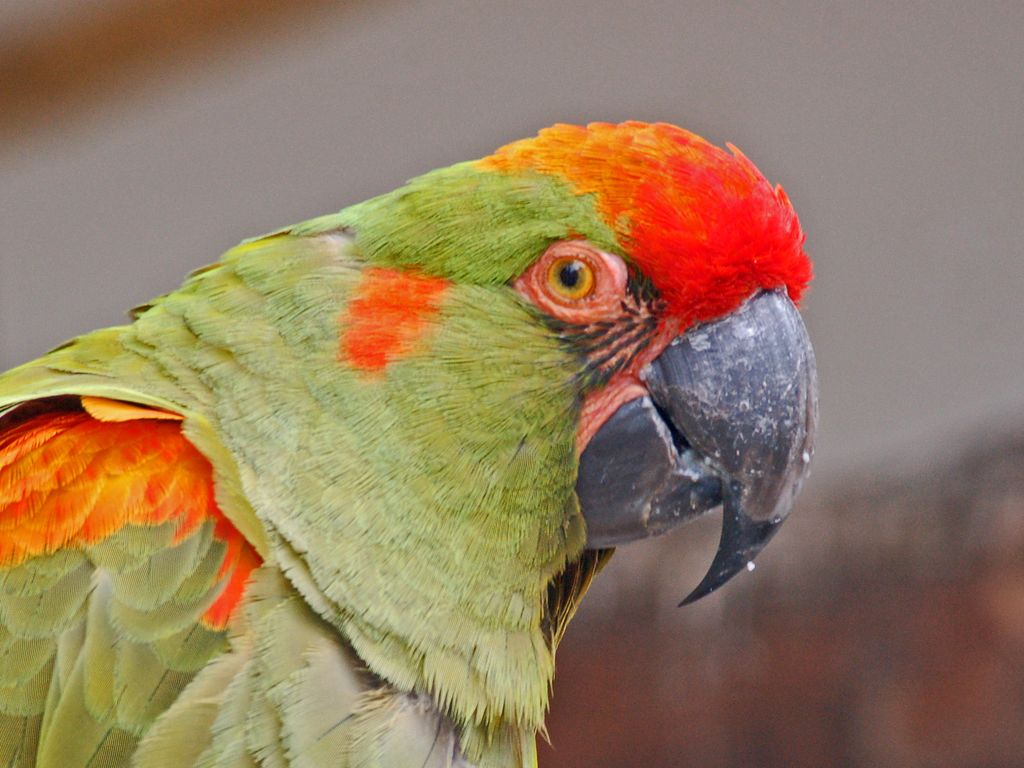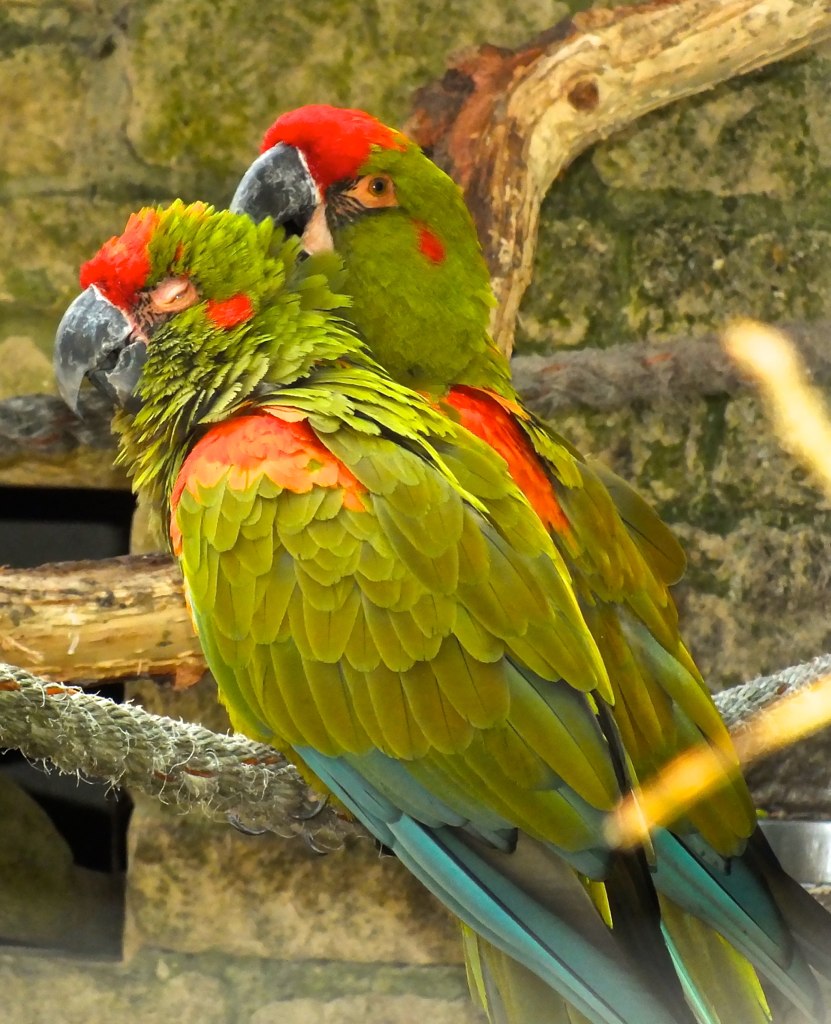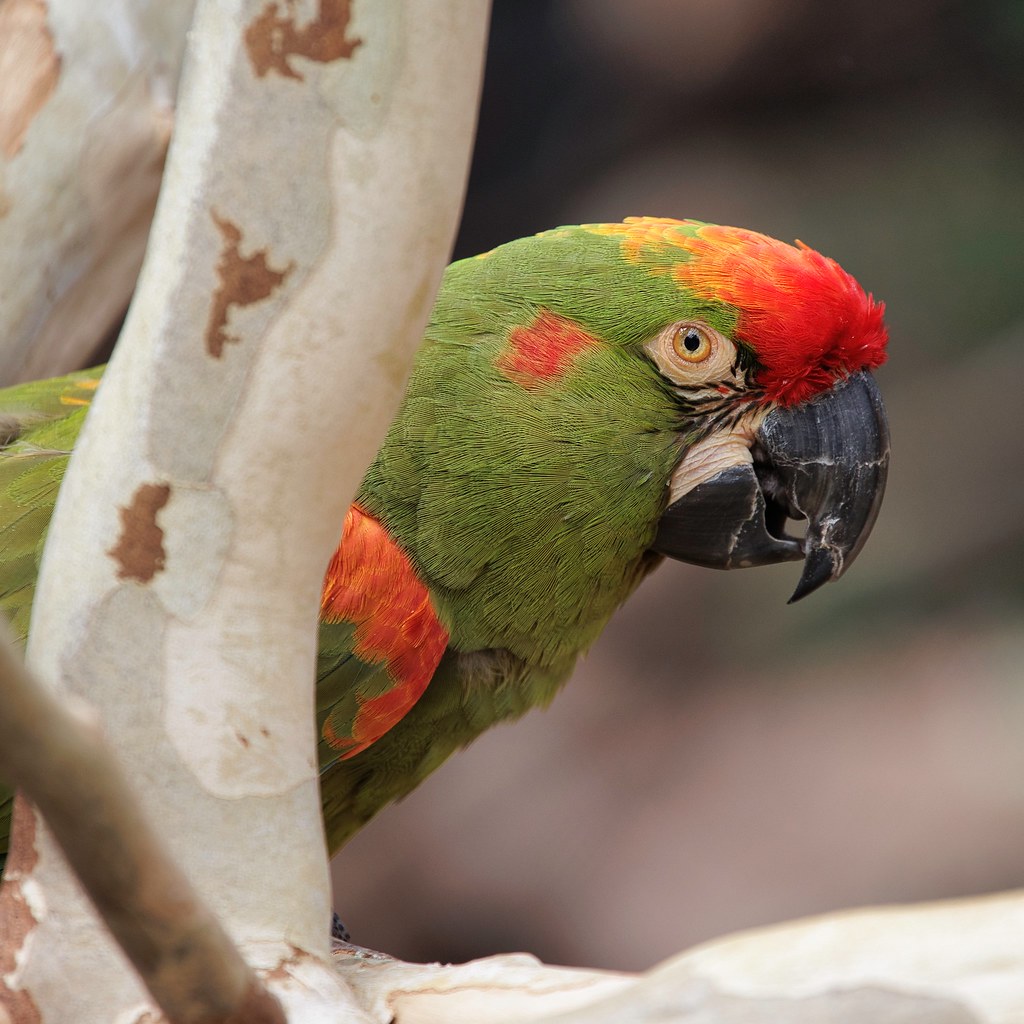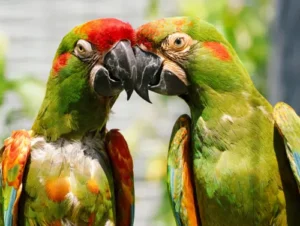Endangered status and unique habitat
The post Unique Pairing Brings Hope for Red-Fronted Macaws – Pet Birds by Lafeber Co. highlights the significance of conservation efforts for the red-fronted macaw, a rare and beautiful bird facing extinction. From a tiny range in Bolivia, these macaws are struggling to survive. With fewer than 300 of them left in the wild, their situation looks dire.
Why is this important? Well, the red-fronted macaw is the only parrot species known to live in such a specialized habitat. Their home is a rocky, desert-like area with a climate that changes dramatically between day and night. The birds nest in cracks and crevices on mountainsides, which makes finding suitable nesting spots even more challenging as their habitat deteriorates.
What makes this article crucial is its focus on the unique challenges these macaws face in their natural habitat. Their striking colors—green with red on their forehead, ears, wings, and just above their feet, along with blue-green tail feathers—make them a sight to behold. But their beautiful appearance doesn’t protect them from the harsh realities of their environment.
Here’s a quote to give you more context:
“The conservation of parrots is an active undertaking with many components including study, experimentation, training, and more than a few other tricks to help further declining populations of birds in the wild.”
With the red-fronted macaw’s small population and limited living space, every effort counts. Conservationists are working tirelessly to help these birds survive and thrive. Stay tuned to see how initiatives like the one at Twycross Zoo might help turn the tide for these incredible creatures.

Conservation efforts and strategies
The key takeaway from the article is the importance of conservation efforts to preserve the red-fronted macaw. These efforts are multi-faceted and include various strategies to safeguard the future of these rare birds.
One major focus of conservationists is the breeding programs. These aim to increase the population of red-fronted macaws by encouraging them to mate and produce offspring in a controlled environment. Twycross Zoo is playing a crucial role in this area, with their recent initiative to pair a male and female macaw in the hope that they will reproduce.

Joining their efforts is a wider array of strategies designed to manage and secure the fragile habitats that these macaws rely on. Here’s a table summarizing some key conservation strategies:
| Strategy | Details |
| Habitat Protection | Conserving and restoring natural habitats to ensure adequate space for nesting and feeding. |
| Community Engagement | Involving local communities in conservation efforts to ensure long-term success and support. |
| Captive Breeding Programs | Pairing macaws in controlled environments to encourage breeding and increase population numbers. |
| Research and Monitoring | Studying the species to gather data on their habits, needs, and challenges to inform conservation strategies. |
| Policy Advocacy | Working with governments to develop and enforce laws that protect the red-fronted macaws and their habitat. |
These combined efforts create a symbiotic framework aimed at not just increasing the population numbers, but also improving the living conditions and long-term viability of the species. Alongside breeding programs, habitat protection, community engagement, research, and advocacy are equally vital. All of these components together form a comprehensive effort to avoid the extinction of the red-fronted macaw.
At Twycross Zoo, hope remains high for the new pair of red-fronted macaws. However, their success is just one piece of the broader conservation puzzle. Everyone involved in these projects holds onto the belief that with dedication, collaboration, and ongoing support, the red-fronted macaws can thrive once again.

The breeding initiative at Twycross Zoo
When it comes to the breeding initiative at Twycross Zoo, the process isn’t just about putting two birds together and hoping for the best. The zoo’s staff have a detailed plan to give these macaws the best chance at mating. First, they make sure the environment is as close to the birds’ natural habitat as possible. This means monitoring temperature, humidity, and even the layout of their living space.
Creating an enriched environment is key. The zookeepers provide plenty of nesting materials and natural toys to keep the macaws stimulated. It’s not just about physical enrichment; mental stimulation is crucial for their overall well-being and willingness to breed.
Next, patience is vital. Birds, like humans, need time to get to know each other. The zoo staff closely observe the macaws, watching for signs of bonding. This might include sharing food, mutual preening, or vocalizations that indicate they are getting comfortable with each other.
But what’s fascinating is the background story of these two macaws. The male, who came from Edinburgh Zoo, has a unique history as he was the only hatchling there in over 15 years. It’s quite touching that the current bird curator at Twycross was part of his journey since the beginning. This emotional connection adds a layer of hope and urgency to the breeding mission.
The female macaw, from Welsh Mountain Zoo, brings her own set of characteristics to the pair. Combining these two unique genetic backgrounds increases the chances of healthy offspring. Genetic diversity is critical for the robustness of future generations.
Zookeepers and conservationists work around the clock, tweaking and adjusting conditions to find the perfect balance that might encourage mating. While the process requires time, it also demands a deep understanding of the behavioral and biological needs of these macaws.
So far, the pair seems to be getting along. Early signs of bonding are promising, and everyone is cautiously optimistic. Yet, the real test is whether they will produce eggs and, eventually, hatchlings.
The journey of these red-fronted macaws at Twycross Zoo is a beacon of hope. It demonstrates the lengths to which humans will go to preserve a species teetering on the brink of extinction. It’s a story of dedication, patience, and the relentless pursuit to ensure that these stunning birds continue to soar in the skies of Bolivia and beyond.
If you want to follow up on this heartwarming initiative or learn more about the conservation efforts for red-fronted macaws, read the full post at https://lafeber.com/pet-birds/unique-pairing-brings-hope-for-red-fronted-macaws/.

